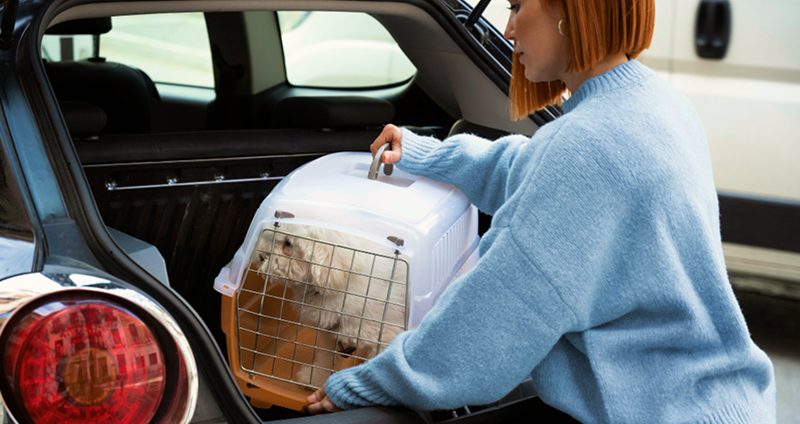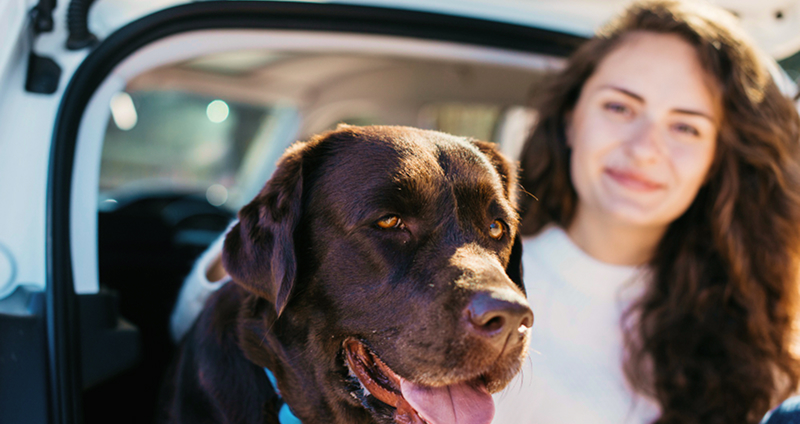How to Start a Pet Taxi Service


Pets have a funny way of running our lives. You wake up early because the dog wants to go out, or you rush home so the cat does not wait too long. Still, every owner runs into the same trouble at some point. Getting a pet across town safely sounds simple, but it often turns into a long day of waiting, traffic, and stress.
That is how pet taxi services started to appear. Small local drivers noticed the need and decided to help. They understand that animals travel differently than people do. A calm voice, a clean seat, or a favorite blanket can change the whole trip. For busy owners, it feels like a real relief knowing someone careful is handling the ride. Some operators use Mobion to plan routes and talk to clients without confusion.
Before diving into rules or business plans, it makes sense to look at what these services really are and how they work in everyday life.
What Is a Pet Taxi Service? How It Works?
What a Pet Taxi Service Means?
A taxi service with pet began as a small solution for everyday situations. Many owners don’t drive, work long hours, or simply can’t manage a last-minute trip across town. Pets still need care and safe transport, and that created space for this kind of business to grow.
People use pet taxis for different reasons, such as:
- vet or grooming appointments
- airport drop-offs or pickups
- daycare and boarding visits
- relocation or long-distance travel
- adoption transfers or rescue support
It is not like a regular taxi. The driver might know the pet’s name, bring a favorite blanket, or play quiet music to keep them calm. These small actions matter. Over time, what started as a ride becomes a friendly routine built on trust and care.
How a Pet Taxi Service Works?
A professional pet taxi service might look simple, but it works a lot like any other small transport business - just with more care involved. The driver’s day often starts early. Cars are cleaned, carriers checked, and notes about each pet are read before leaving the garage. Every detail matters, from temperature inside the car to the noise level on the road.
Once the trip begins, the goal is to keep things calm. Some drivers talk softly, others keep a quiet background sound to help animals relax. A short ride can feel long for a nervous pet, so being patient makes all the difference.
Here’s how a typical service runs:
- the owner books a ride and confirms pickup
- the pet is safely loaded and secured
- the driver keeps a slow, steady pace
- after drop-off, the animal is handed over with care
Each trip may be different, but the best ones end with a calm pet and a relieved owner.
How to Become a Licensed Pet Transporter

In the United States, anyone transporting animals for money must meet USDA standards under the Animal Welfare Act. Registration is done through the USDA’s Animal Care Program and costs about $120 per year. The process includes an online form and, in some cases, a quick vehicle check to make sure animals can travel safely.
Most states have their own add-ons. For instance, California asks for a business license and vehicle inspection, while Texas and Florida require proof of insurance before you start operating. It’s best to call your local DMV or county clerk’s office to confirm the steps.
Insurance is essential. Pet transport business insurance protects you and your car, while pet taxi insurance covers the pets during transit. Combined plans usually cost around $40–60 monthly and help clients trust your service from the start.
How to Start a Pet Transport Business Step by Step
Every pet transport company starts from something small. Maybe it’s helping a friend get their dog to the vet or driving a rescue cat across town. Over time, you see that there’s real demand. In the US, this niche already makes more than 1.3 billion dollars a year and keeps growing. Before you start, check the basic rules in your state. Some places need USDA Animal Care Program registration, others just ask for a business license and proof of insurance. Add up simple costs like gas, cleaning, and safety gear to know what you can afford at first.
When the basics are clear, look around. Find out who already offers rides for pets, what prices they set, and where they leave gaps. The more you know about your area, the easier it becomes to plan your next move.
Research the Pet Transport Market in Your Area
Before spending money, look around and see what already works in your city. Search “taxi pet friendly” on Google or Maps and check who shows up first. Some will have websites, others just run Facebook pages. Look at their reviews and see what people mention most. If clients often complain about slow replies or high prices, that is a sign there is room for something better.
Go offline too. Visit a few vets, grooming salons, or animal shelters and ask how their clients handle transport. Many will say they wish there were more options or faster help. Those short talks can show real demand in your area. Once you understand what pet owners need, it becomes easier to plan your first offers and build a service that actually fits.
Create a Solid Business Plan and Budget
When I first started thinking about a pet taxi, I thought it would be cheap. It wasn’t. I wrote everything down on an old notepad - fuel, soap for cleaning crates, even snacks for the dogs. It helped to see what really eats the money. If you plan to do the same, keep it simple. Write it down, don’t try to make it perfect.
Here’s what you need to check first:
- how much your car costs to keep on the road
- how often you’ll need fuel and cleaning supplies
- what people in your area pay for short and long trips
- one small safety fund for repairs or quiet weeks
Most people spend around five to fifteen thousand dollars before they start earning back. Track everything, even the small stuff. The plan won’t look pretty, but it will be yours - and it will work.
Get the Right Vehicle and Equipment for Safe Travel
If you plan to drive animals, your car becomes part of the team. It does not need to be fancy. What matters is space and easy cleaning. Many people use small vans like a Transit Connect or any SUV with good air flow. Check that doors open wide and the floor can handle water or mud.
You’ll need a few things inside. Crates or carriers of different sizes, straps to keep them steady, and soft padding for nervous pets. Keep wipes, towels, and a bottle of sanitizer close by. On hot days, open windows a bit before picking up an animal. A calm car keeps pets quiet.
Every small detail helps. Clean seats, a short break between rides, a few kind words to the owner - these are the things that make a pet transport business work long term.
Build an Online Presence and Start Marketing
At first I didn’t think I needed social media. I thought people would just find me. They didn’t. The first client came after I posted a short message in a local Facebook pet group. Nothing special, just a photo of my car and a note saying I help move pets around town. Within a day I got two calls. That’s when I realized it works. So, start small. Add your number to Google, make sure people can text you, and upload real photos. Don’t spend hours polishing posts.
If you keep it simple, people notice. They like seeing real rides, real animals, and a person behind the wheel. That’s how a pet friendly taxi service grows - one small post, one honest review, one happy owner at a time.
Get Proper Insurance for Your Pet Transport Business
Before taking bookings, check your insurance. Many drivers skip this step and regret it later. Regular auto coverage protects the car, not the animals. You need a plan that covers pets in your care and any accidents that might happen on the road. Talk to a few pet taxi insurance companies and ask what they include. Some offer coverage for vet costs, lost animals, or damage inside the vehicle. Prices change from state to state, but most small services pay between fifty and eighty dollars a month. Ask local shelters or vets for advice, they know which insurers are fair. Keep a copy of your policy in the car and check the date once in a while. It is one of those things you hope to never use but are glad to have when needed.
Build, Grow, and Scale a Sustainable Pet Taxi Business

At some point the work picks up. You start getting more calls, more pets, and suddenly it is hard to keep track. Write everything down. Rides, distance, fuel, the ones who call again. It helps you see when the business starts to grow. Once you reach around 25 rides a week, things get busy fast. That is when simple taxi software becomes useful. It keeps your trips, payments, and clients in one place. No more forgotten calls or lost notes.
Most drivers see the difference within a month. Planning gets easier and trips take less time. Save what you learn and fix the small mistakes. Bit by bit you will find a rhythm. That is how starting a pet transport business turns into steady work that pays off.
Pet Taxi Service: A Smart Move for Animal Lovers
Starting a pet taxi service can change the way you see animals and people. Every day brings something new — a cat going to the vet, a family moving across town with their dog, a rescue center sending pets to new homes. It takes patience and care, but it’s also one of those jobs that feels good when done right. Most drivers say it’s more than earning money; it’s about helping others and finding small routines that work. Keep your car ready, talk gently to the animals, and take notes after each trip. Over time you’ll learn what routes are fastest and what clients appreciate most. When things grow busier, you can add a second car or even hire help. Tools that manage routes, schedules, and payments make this easier.
If you plan to set up a pet transport business, look into digital tools early. You can explore how they work through Request Mobion demo and see how the organization turns small services into steady ones.
F.A.Q.
Ready to revolutionize your taxi business?
Choose what you need: